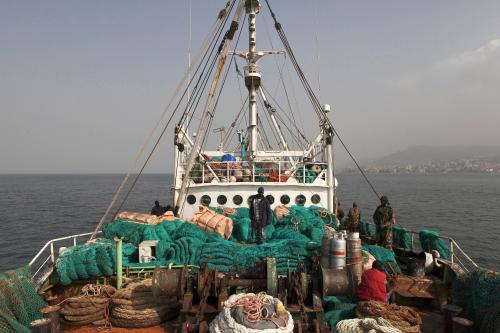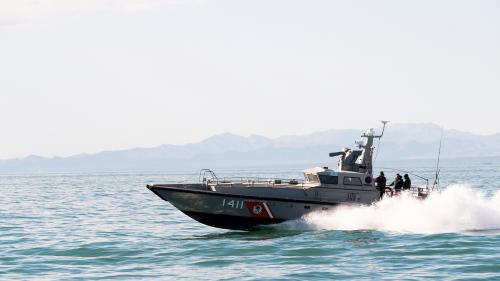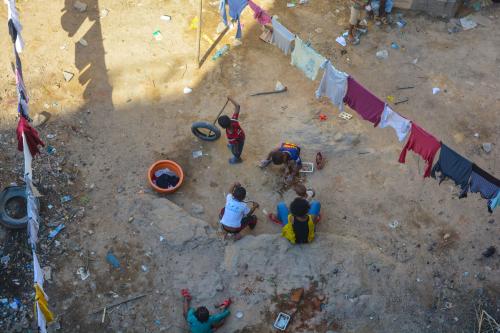“I believe the title of pirate should be given to those who come to our waters illegally.”
– Farah Ismail Eid, Interview with a Pirate
In early 1991 a few miles off of the coast of Somalia—just as Mohamed Siad Barre’s dictatorship was collapsing—the merchant vessel Naviluck was attacked by three boatloads of men who killed some of the ship’s crew members, set it on fire, and sank it. The attackers did not try to steal cargo, hold hostages, or collect ransom. More than likely, coastal residents who had grown hostile towards foreign vessels decided to take matters into their own hands.
Prior to 1991, piracy off the Horn of Africa was more or less unknown, with far more incidents occurring in the Strait of Malacca or the Gulf of Guinea. In the 1980s the Somali government resettled thousands of nomads from the drought-stricken interior to work in coastal fishing cooperatives, vastly expanding both artisanal fish production and the number of people dependent on small-scale fisheries. As Somalia plunged into civil war, foreign fishing fleets began operating inside Somalia’s Exclusive Economic Zone (EEZ), sometimes illegally. Many of these ships employed habitat-destroying methods such as bottom trawling and blast fishing, or methods that routinely caught large volumes of non-target species, which would then be discarded. Egypt, Greece, South Korea, and Taiwan were among the nations that trawled in Somali waters in the 2000s. Around the same time, EU-flagged vessels and EU-owned vessels flagged to other nations began purse seining in the Somalia EEZ. In response, Somalis took to the seas to fight them off. Between the 1990s and 2010—as some ships began to arm themselves, and some shipping companies made deals with warlords for protection—piracy in the western Indian Ocean became far more organized, sophisticated, and lethal.
International organizations have long argued that poverty and unemployment in coastal communities are underlying causes of piracy. Others are skeptical that problems facing local fisheries are connected to piracy, based on reports that many pirates are actually members of inland nomadic clans or criminal gangs. In new research, we explore these links—not only in the context of Indian Ocean piracy, but globally. We segment the world’s oceans into 1 degree-by-1 degree cells, and analyze the spatial links between harmful fishing practices and piracy incidents between 2005 and 2014 (see map). Previous research has tended to focus on country-specific variables (e.g., poverty, per-capita income, conflict, etc.) and has not adequately addressed the location-specific factors that influence piracy. By contrast, our data-driven spatial analysis is based on the geographic locations of actual pirate incidents. What did we find?
Source: Desai and Shambaugh, PLOS ONE 2021 (CC-BY 4.0)
First, failed and fragile states create environments ripe for piracy. Lawlessness and weak governance create underlying conditions that enable pirate gangs to operate with minimal risk. These conditions also increase the appeal of pirate gangs that can offer alternate sources of livelihood and help to deter encroachment by industrial fishing fleets.
Second, we find that piracy is not more likely to be close to impoverished coastal areas, nor near countries affected by drought and associated agricultural losses. On the contrary, piracy tends to be more prevalent in areas with greater levels of economic activity.
Third, and most critically, pirates are more likely to attack in maritime cells in which there is high bycatch or where there are high rates of fish catch using habitat-destroying practices (e.g., bottom trawling, blast fishing). Similarly, piracy spikes in areas where higher levels of illegal, unreported, and unregulated (IUU) fishing are prevalent.
These findings suggest a different interpretation of the fishing-piracy nexus. It may not be poverty or unemployment itself driving piracy, as much as the expectation that industrial fishing by foreign fleets will deplete fish stocks and harm livelihoods that depend on small-scale fisheries. Most vulnerable fishing communities in the developing world have seen significant encroachment by fleets using destructive or illegal methods, by ships flying “flags of convenience.” In response, some fishermen—having navigational and sea-faring skills—turn to piracy when they expect income losses in the future. Moreover, some villages in affected coastal areas have hired organized pirate gangs to drive away or deter foreign fishing fleets in the absence of coast-guard enforcement. In short, piracy thrives where harmful fishing practices prevail.
Our research shows that anti-piracy actions matter but are insufficient in curbing piracy. The number of pirate attacks drops by 10 percent for each naval base located in a maritime cell. Naval patrols have been remarkably effective in reducing piracy near the Gulf of Aden; their absence in the Gulf of Guinea is considered one reason why pirate attacks have persisted there. Somali piracy likely succeeded in temporarily driving foreign fishing fleets out of Somali waters, thus allowing fish stocks that were under stress to recover. But if these stocks recover without protections against illegal and destructive fishing practices, we can expect piracy to return. Indeed, since 2017 piracy has picked up off the coast of Somalia.
It has become clear that IUU fishing not only endangers food security and damages vulnerable ecosystems, but its fleets are linked to: human trafficking, chattel slavery, drug smuggling, and terrorism. In regions where threats to small-scale fisheries and their dependents persist, piracy thrives in an ecosystem of organized criminal activity.









Commentary
Why pirates attack: Geospatial evidence
March 15, 2021